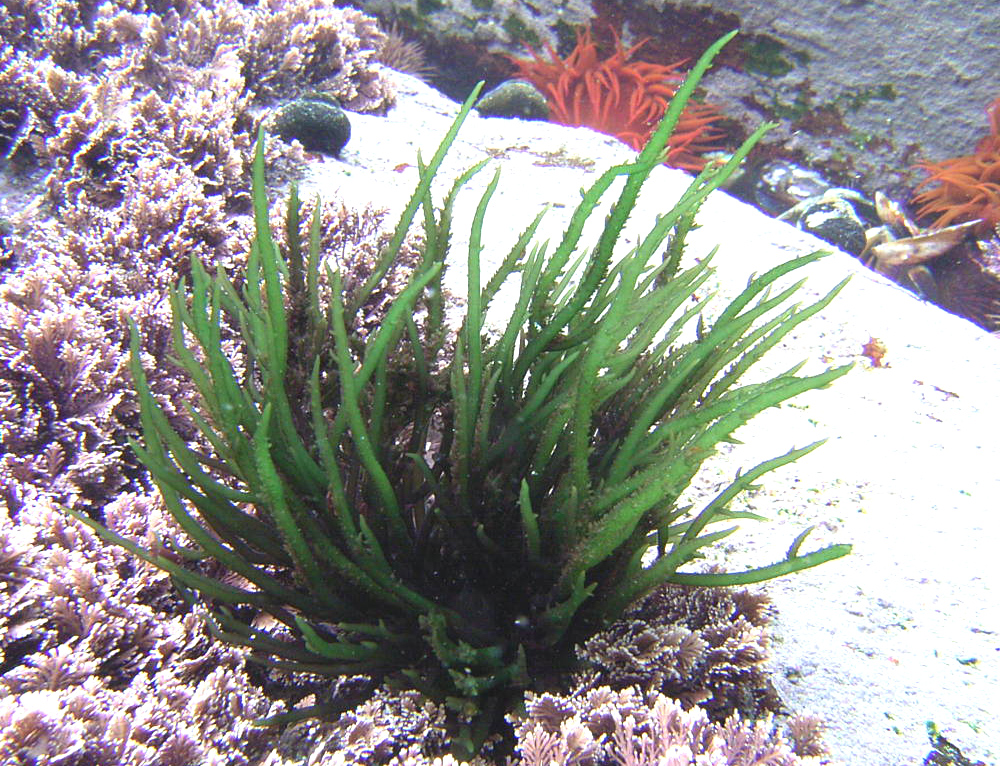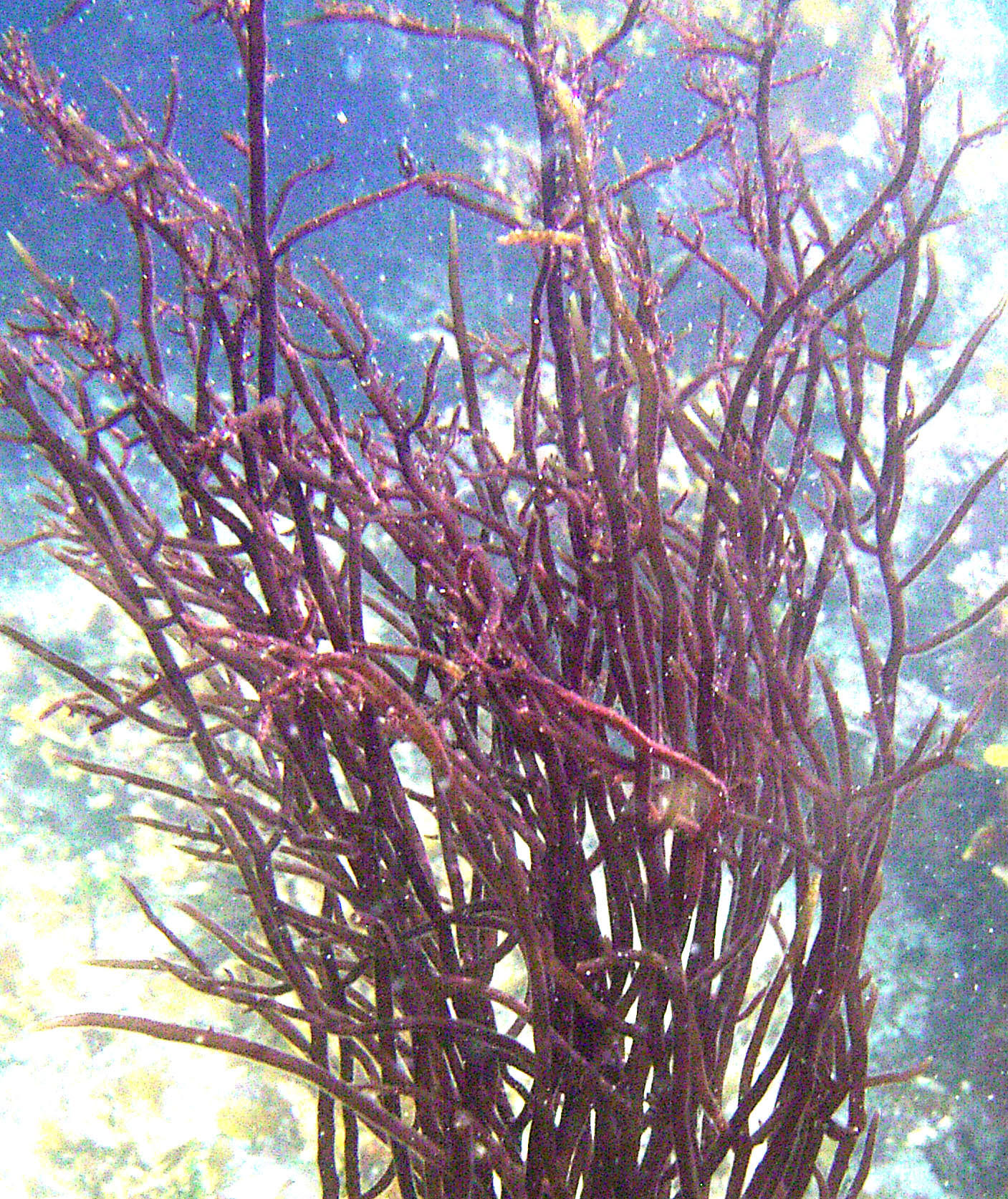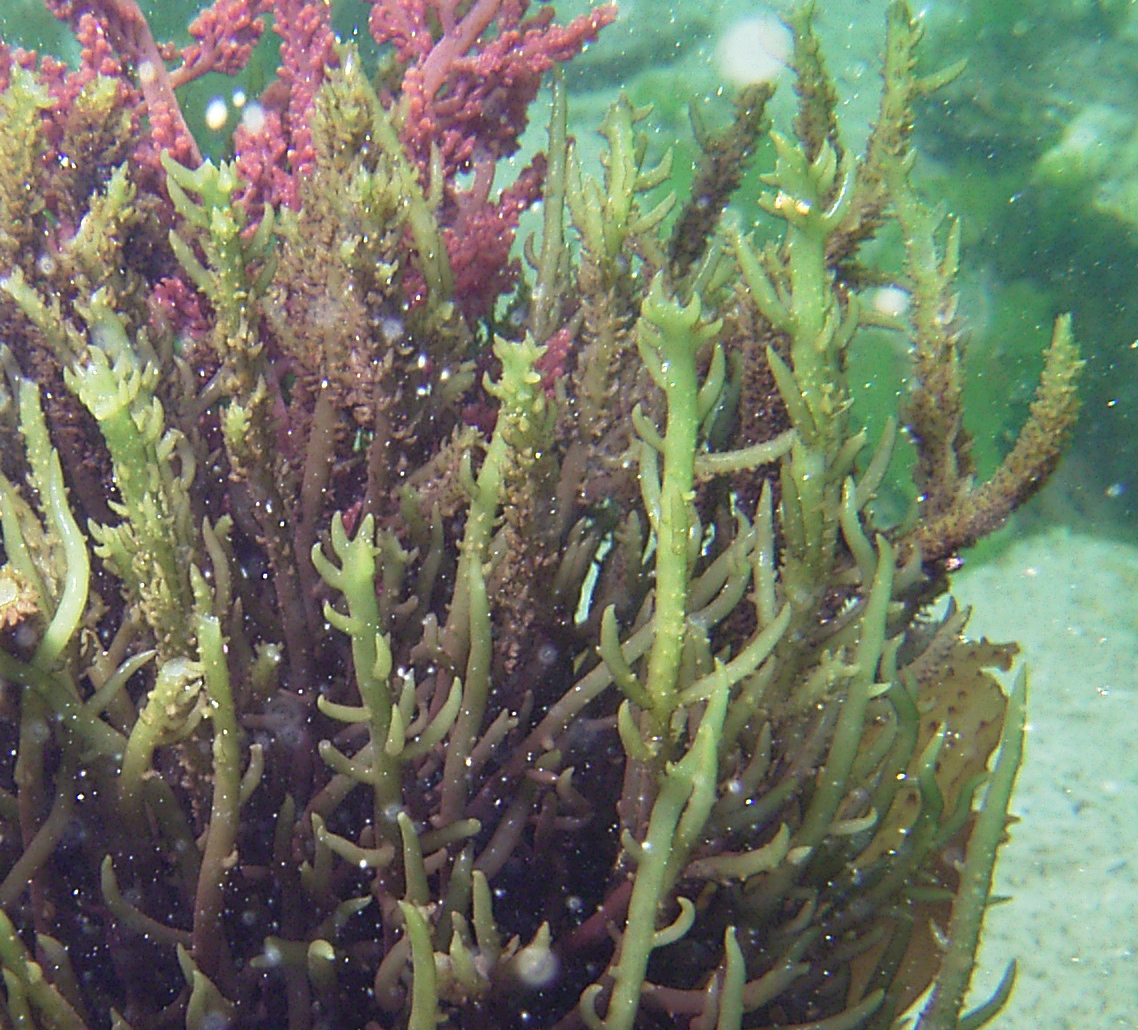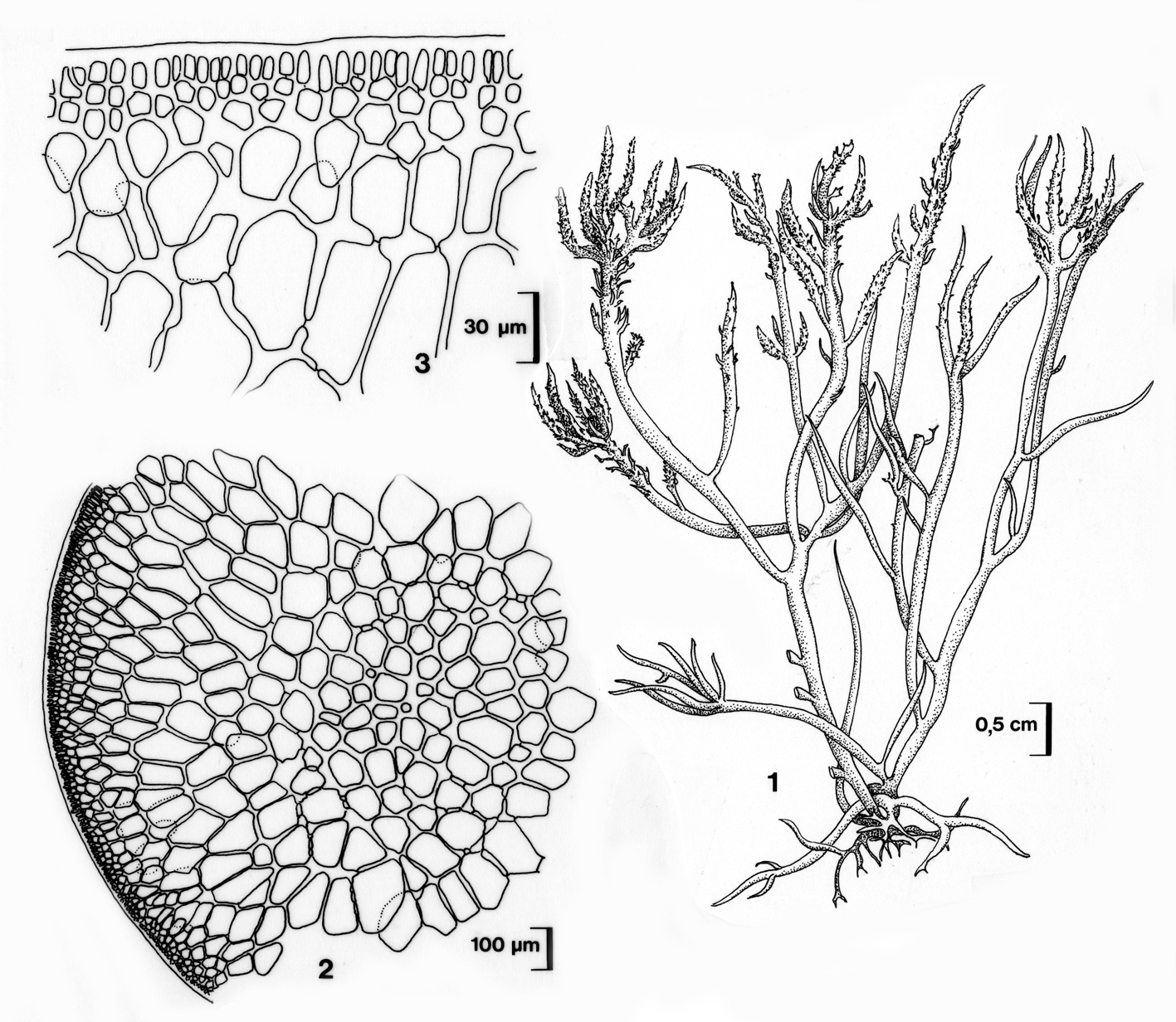Seaweeds of the South African South Coast


Order Gigartinales
Family Cystocloniaceae
Hypnea spicifera (Suhr) Harvey 1847:14
Plants green, purplish-green or purple, erect, a few to 50 cm tall, usually in dense tufts. Rhizomatous base giving rise to stiff, irregularly branched, terete, upright axes up to 3mm in daimeter, upper parts with numerous short spines, hooked apices absent. In cross –section central filament not distinguishable, central medulla with smaller cells (up to 50 µm diameter) than outer medulla (up to 150 µm). Reproductive structures in clustered spinous appendages on upper thallus parts. This species can be very variable in habit, from a short (2-3 cm), bright green turf typical of intertidal platforms, to dark purple stands of long (up to 50 cm ) thalli.
Collections, ecology and regional distribution
Found from Namibia along the whole South African coast into northern KZN (1-56), but typical of the south coast, where plants attain their greatest sizes. This species is typical of the lower eulittoral and eulittoral fringe on wave-exposed shores, particularly those influenced by sand.
World distribution: Widely distributed in the Indian Ocean (Silva et al. 1996).
Type locality: Isipingo Beach, near Durban (Silva et al. 1996).
Note: Further information on the morphology, ecology and population dynamics of H. spicifera in South Africa can be found in Isaac & Hewitt (1953) and van Zyl (1993).

Hypnea spicifera, Arniston.

Hypnea spicifera, subtidal, De Hoop.

Hypnea spicifera, terminal branchlets (purple seaweed in background is a Laurencia).

Hypnea spicifera. 1. Habit. 2. Cross section. 3. Detail of figure 2 showing outer cortical layers. Reproduced from Stegenga et al. (1997).
References Hypnea spicifera
Harvey, W.H. 1847. Nereis australis, or algae of the southern ocean: being figures and descriptions of marine plants, collected on the shores of the Cape of Good Hope, the extra-tropical Australian colonies, Tasmania, New Zealand, and the Antarctic regions; deposited in the Herbarium of the Dublin University. Part 1. pp. i-viii + 64, Plates I-XXV. London: Reeve Brothers.
Isaac, W.E. & Hewitt, F. 1953. The morphology, geographical distribution and ecology of Hypnea spicifera (Suhr) Harv. Journal of South African Botany 19: 73-84, 6 figs, Plates XVI, XVII.
Silva, P.C., Basson, P.W. & Moe, R.L. 1996. Catalogue of the benthic marine algae of the Indian Ocean. University of California Publications in Botany 79: 1-1259.
Stegenga, H., Bolton, J.J. & R. J. Anderson. 1997. Seaweeds of the South African west coast. Contributions from the Bolus Herbarium 18: 655 pp.
van Zyl PFF 1993. Ecology and management of an Eastern Cape carrageenophyte, Hypnea spicifera (Suhr) Harv. PhD thesis,University of Port Elizabeth, South Africa. 203 pp.
Cite this record as:
Anderson RJ, Stegenga H, Bolton JJ. 2016. Seaweeds of the South African South Coast.
World Wide Web electronic publication, University of Cape Town, http://southafrseaweeds.uct.ac.za; Accessed on 19 January 2026.